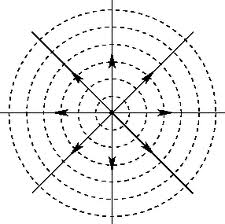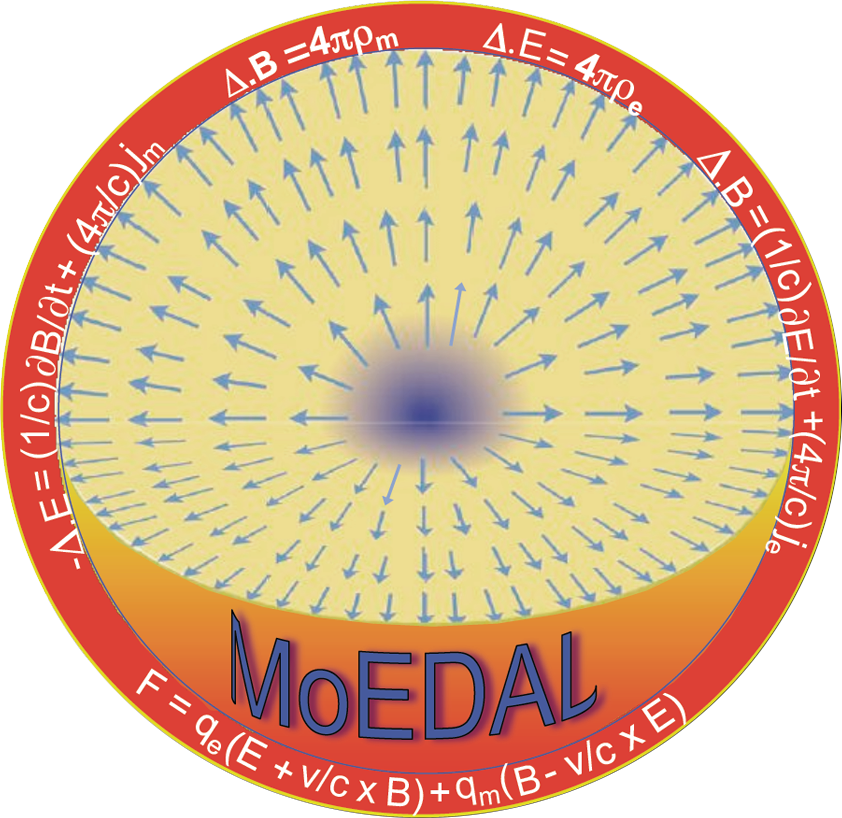
Many of the important properties of Magnetic Monopoles are obtained from the Dirac relation and are summarized below:
- Basic magnetic charge. If n =1 and the basic electric charge is that of the electron, then the magnetic charge, gD = ħ.c/2e = 137e/2, in general, gD = n.ħ.c/2e. The magnetic charge is larger if n > 1 and/or if the basic electric charge is e/3.
- Electric charge. Electrically charged monopoles (M), or dyons, may arise as quantum mechanical excitations or as M-p, M-nucleus composites.
- Dimensionless magnetic coupling constant. In analogy with the fine structure constant, α = e2/c.m ≈ 1/137, the dimensionless coupling constant is αg = gD2 /ħ.c ≈ 34.25. As it is greater than one, perturbative calculations cannot be used.
- Spin. The spin of the magnetic monopole is usually taken to be 1/2 or 0.
- Energy W acquired in a magnetic field B. W = ngDBl = n x 20.5keV/G.cm. In a coherent galactic length (l ∼ 1 kpc, B ≈ 3μG), the energy gained by a magnetic monopole with g = gD is W ≈ 1.8 x 1011 GeV. Classical poles and IMMs in the cosmic ray flux may be accelerated to relativistic velocities. GUT poles should have low velocities, 10−4 < β < 10−1.
- Bending in a solenoidal field. Detectors at colliders usually employ a solenoidal field because monopoles accelerate along field lines monopoles will curve in the non-bend plane of the solenoidal field (conventionally the r-z plane) and will not curve in the bend plane (conventionally the r- plane) of the magnetic field.
- Trapping. Magnetic Monopoles may be trapped in ferromagnetic materials by an image force, which could reach values of ∼10 eV/Å.
- Bound systems. The interaction of the magnetic charge of the magnetic monopole with a nuclear magnetic dipole could lead to the formation of a M-nucleus bound system. A monopole-proton bound state may be produced via radiative capture. Monopole-nucleus bound states may exist for nuclei with large gyromagnetic ratios.
- Energy losses of fast poles. A fast magnetic monopole with magnetic charge gD and velocity v = β c behaves like an electric charge (ze)eq = gD the energy losses of fast monopoles are thus very large. Also, the energy loss of a moving magnetic monopole falls with, in contradistinction to an electrically charged particle.
- Energy losses of slow poles (10−4 < β < 10−2). May be due to ionization or excitation of atoms and molecules of the medium (“electronic” energy loss) or to recoiling atoms or nuclei (“atomic” or “nuclear” energy loss). Electronic energy loss predominates for β > 103.
- Energy losses at very low velocities. MMs with v < 10−4c cannot excite atoms; they can only lose energy in elastic collisions with atoms or with nuclei. The energy is released to the medium in the form of elastic vibrations and/or infrared radiation.
- Energy losses in superconductors. If a pole passes through a superconducting ring, there will be a magnetic flux change of ϕB = 2πħc/e, yielding dE/dx ≈ 42 MeV/cm, independent of velocity.
- Catalysis of nucleon decay. The interaction of the GUT monopole core with a nucleon can lead to a reaction in which the nucleon decays (monopole catalysis of nucleon decay), i. e. M + p → M + e+ π0. The cross section for this process is of the order of magnitude of the core size, ∼10−56 cm2, practically negligible. But the catalysis process could proceed via the Rubakov-Callan mechanism with a cross section of the order of the strong interaction cross section. Obviously, GUT monopoles are far to heavy to be created by terrestrial accelerators.
- Mass. As we have seen above magnetic monopoles that are potentially detectable at a collider can have a range of masses. Thus, in the MoEDAL search we will treat mass is as a free parameter.
